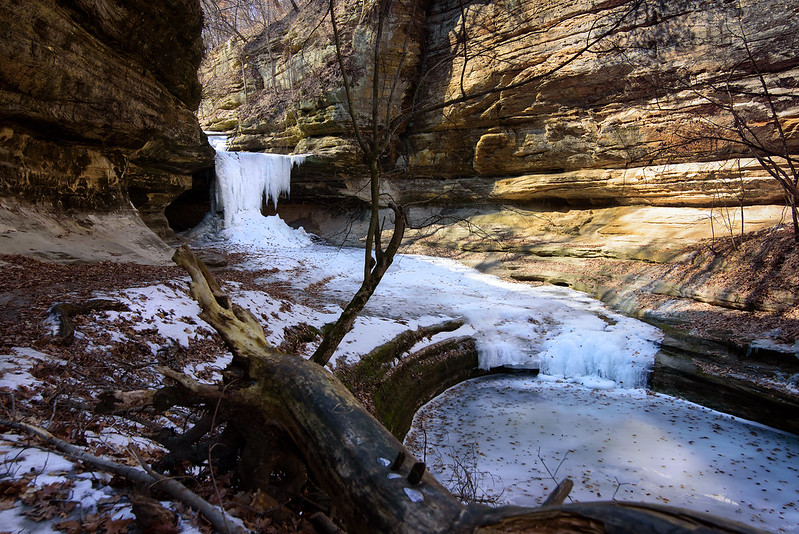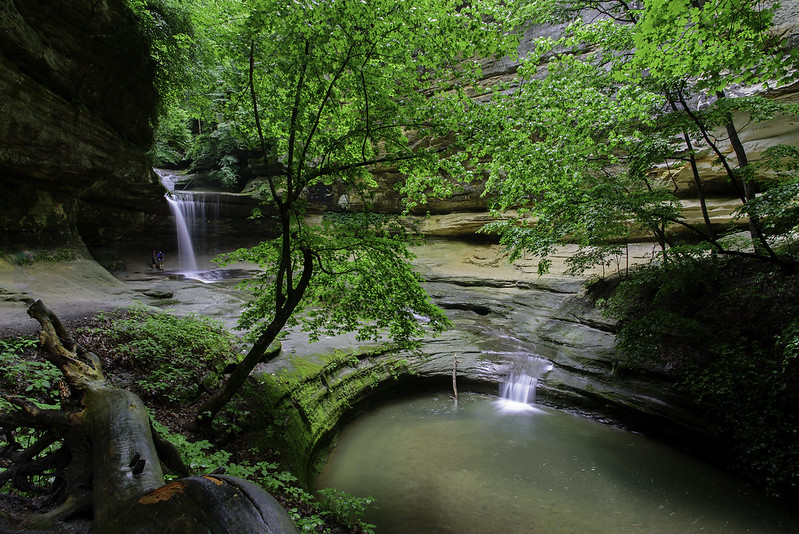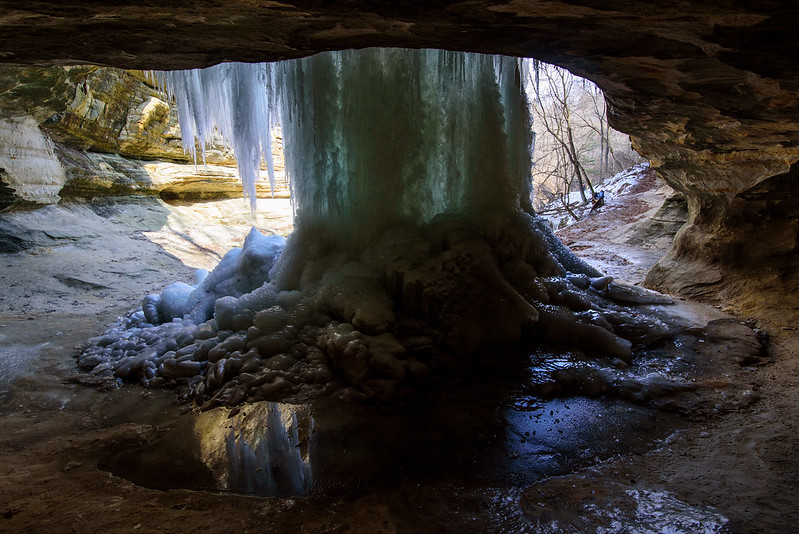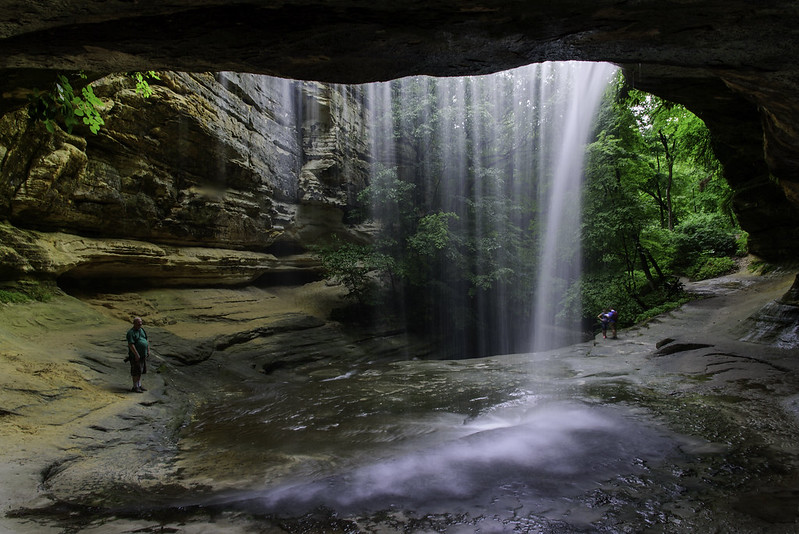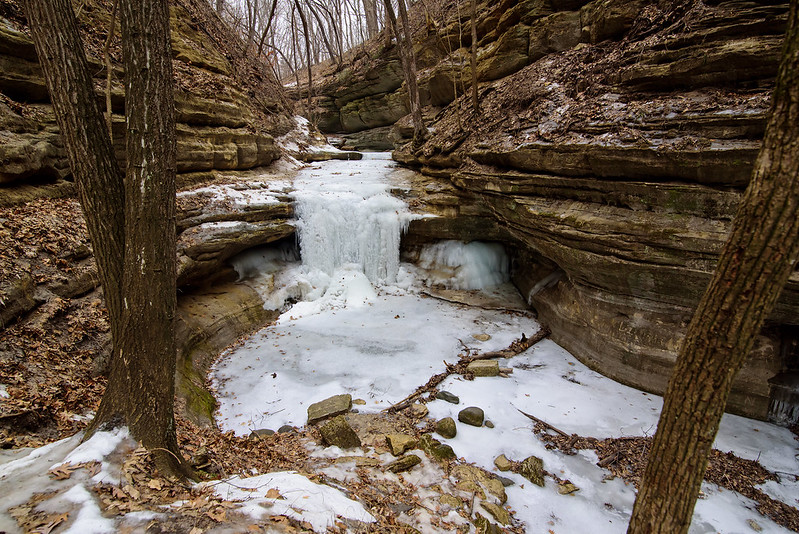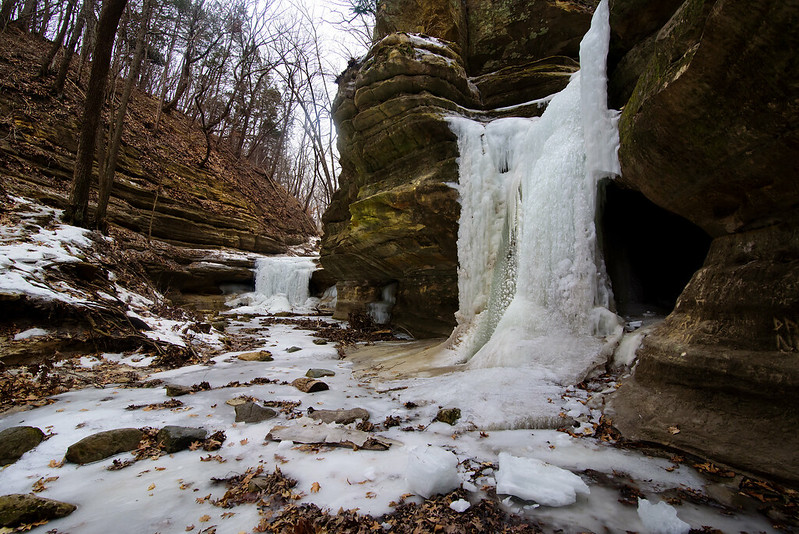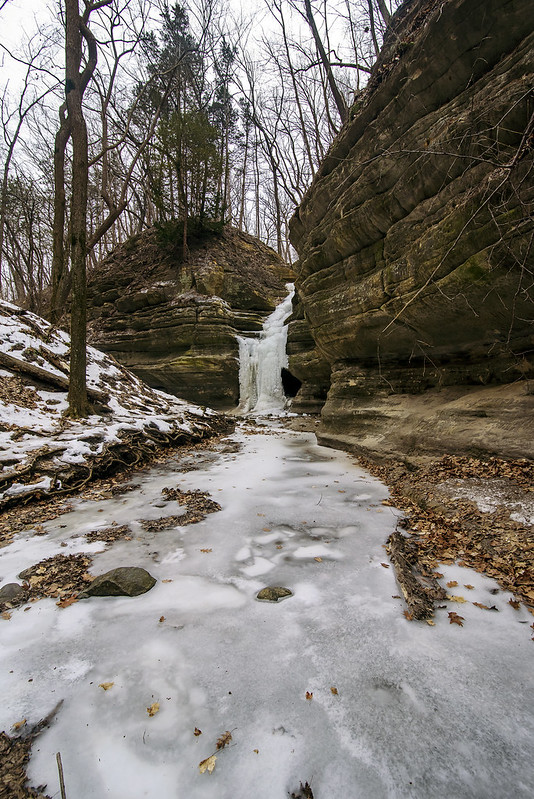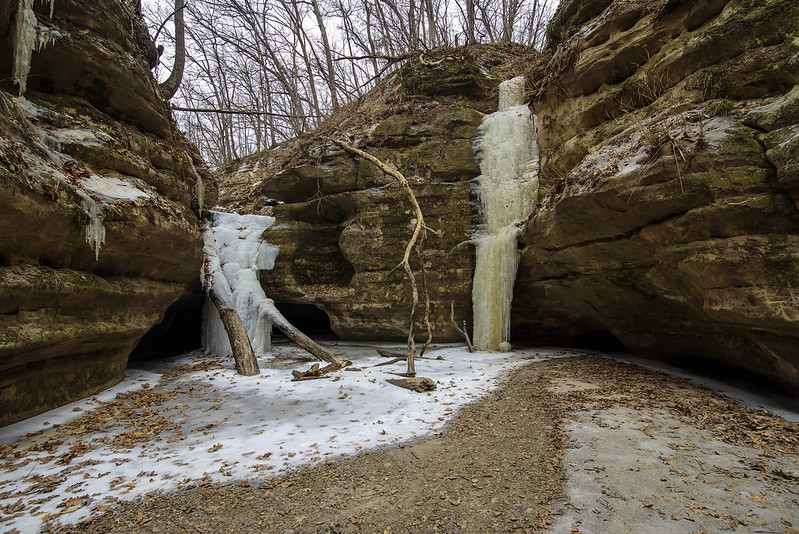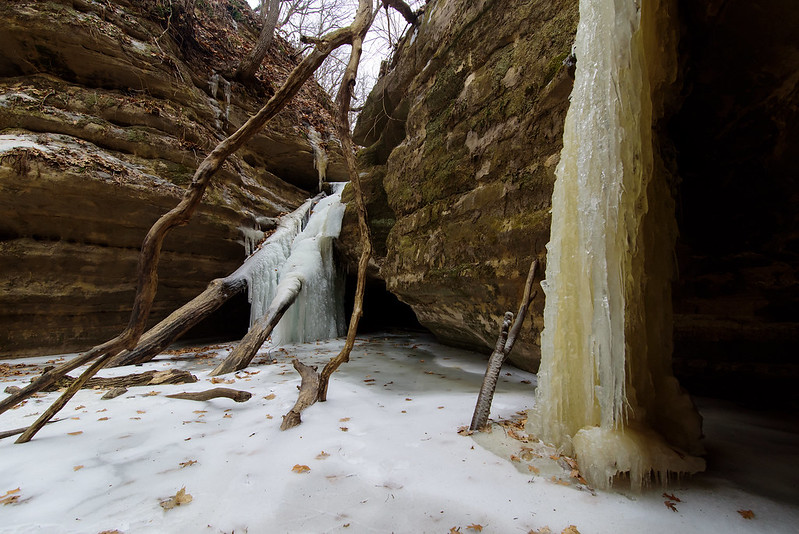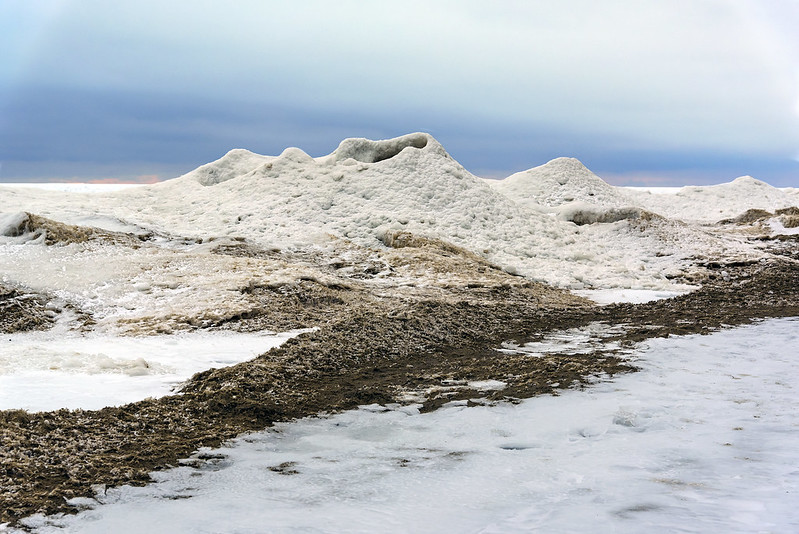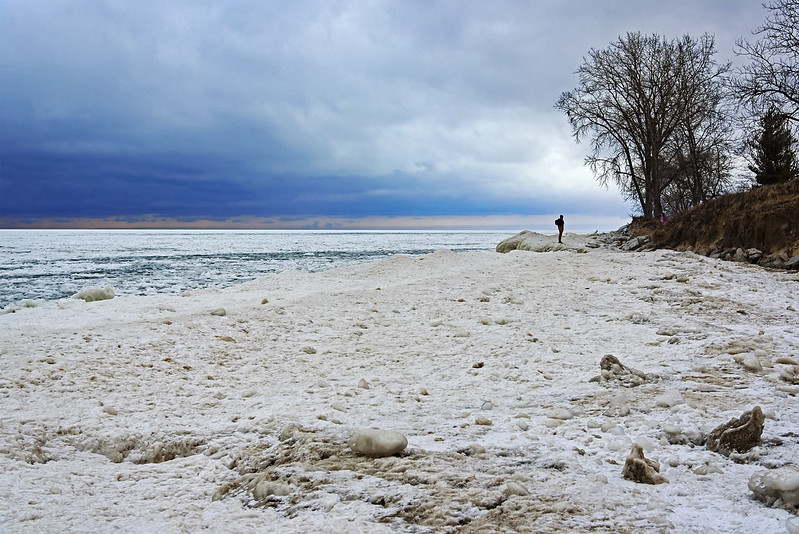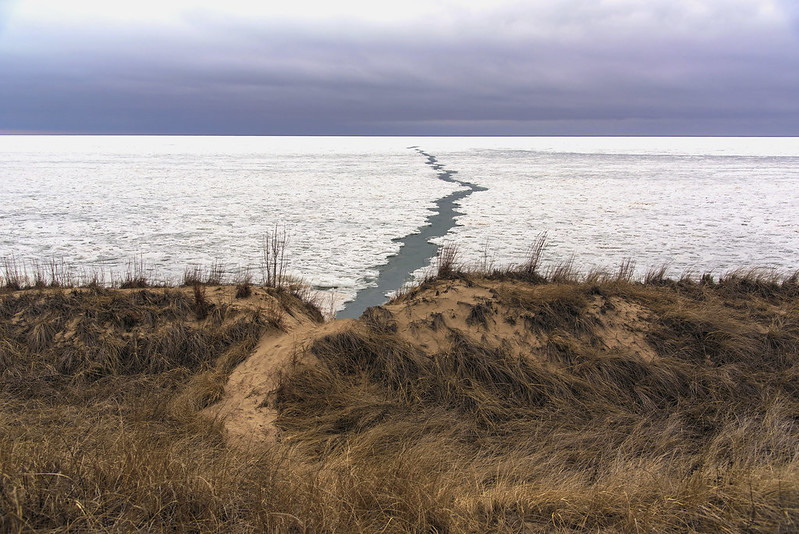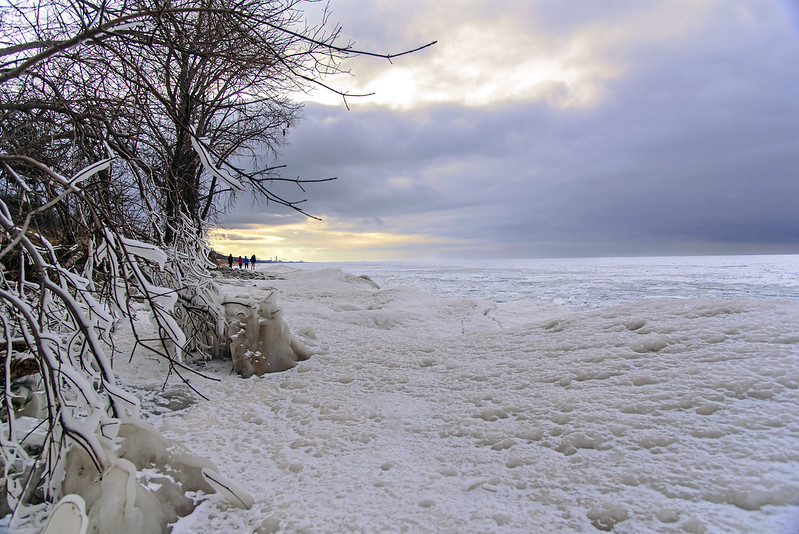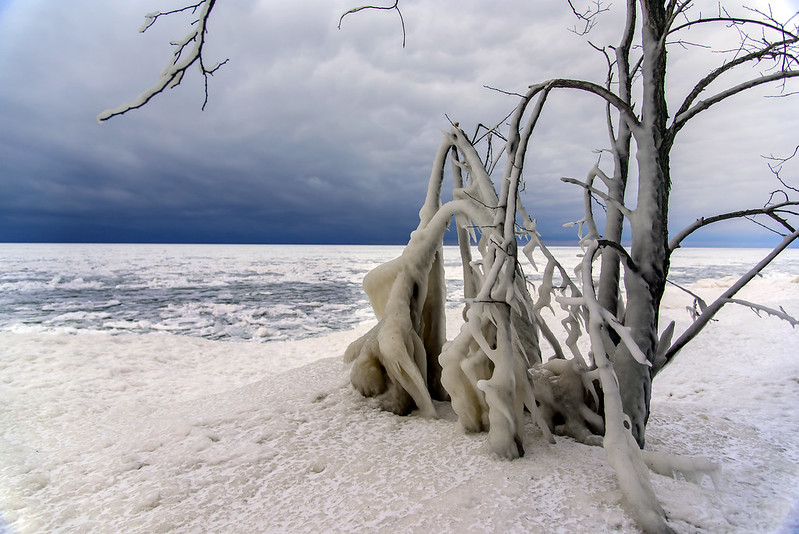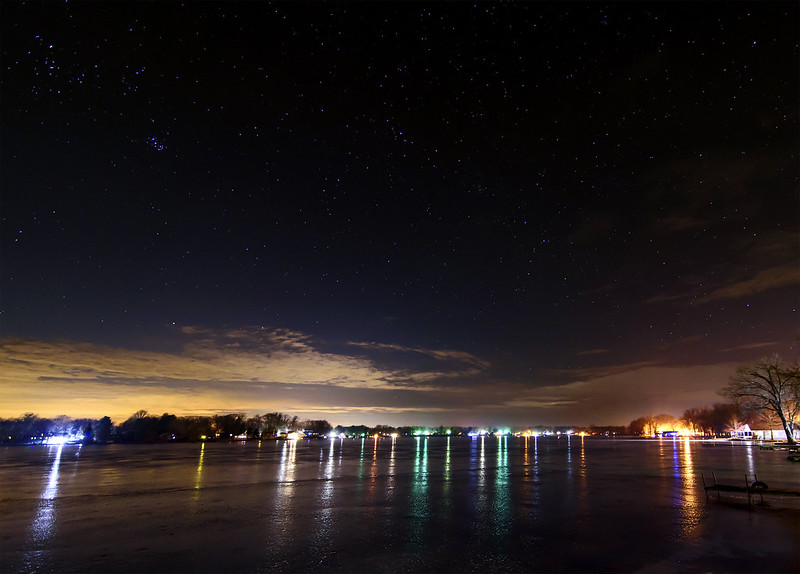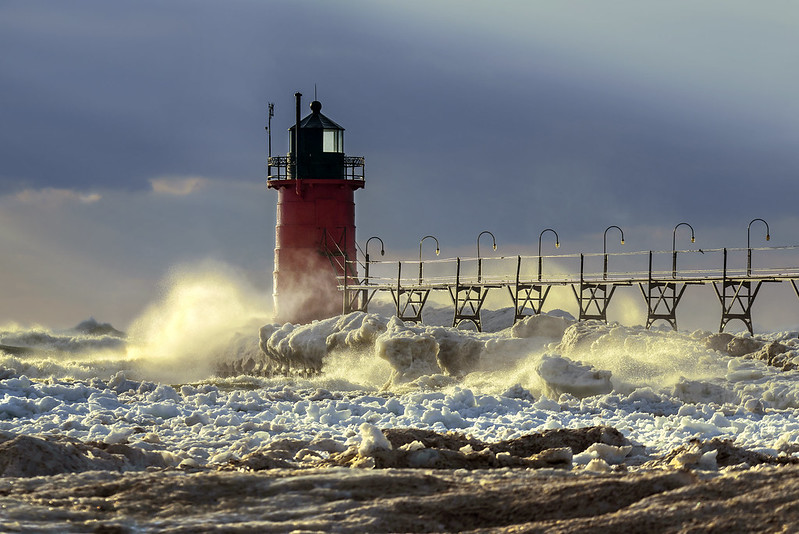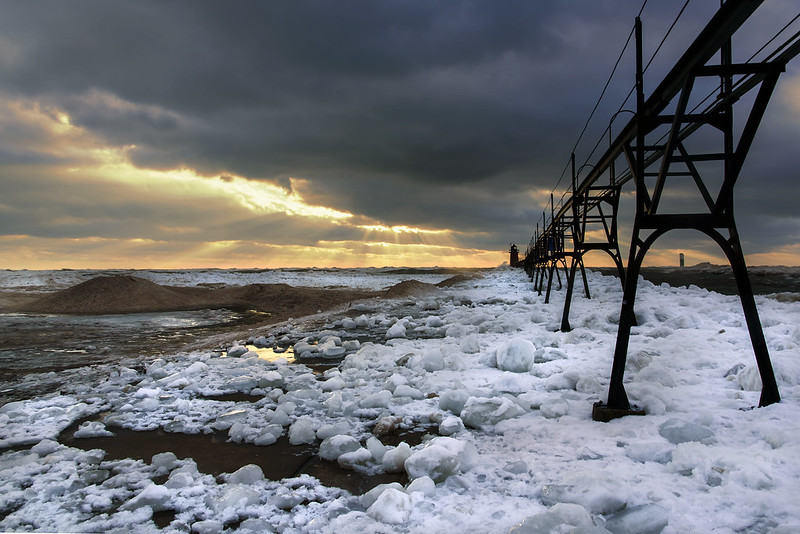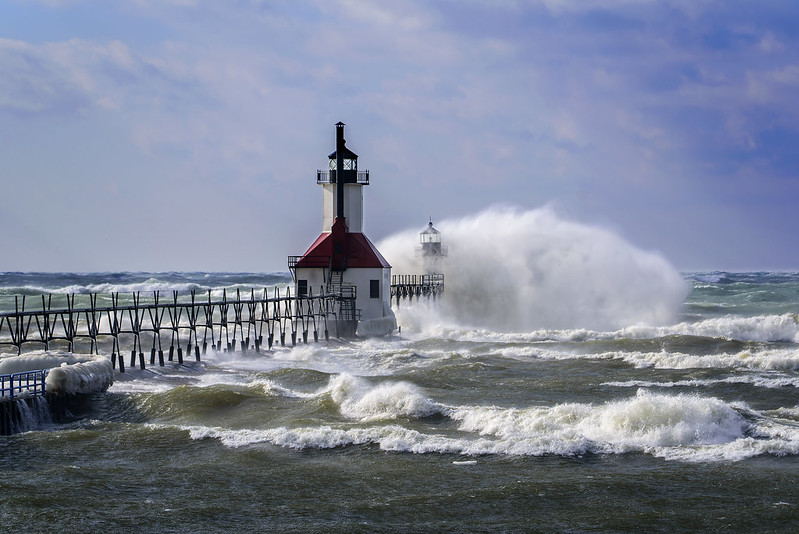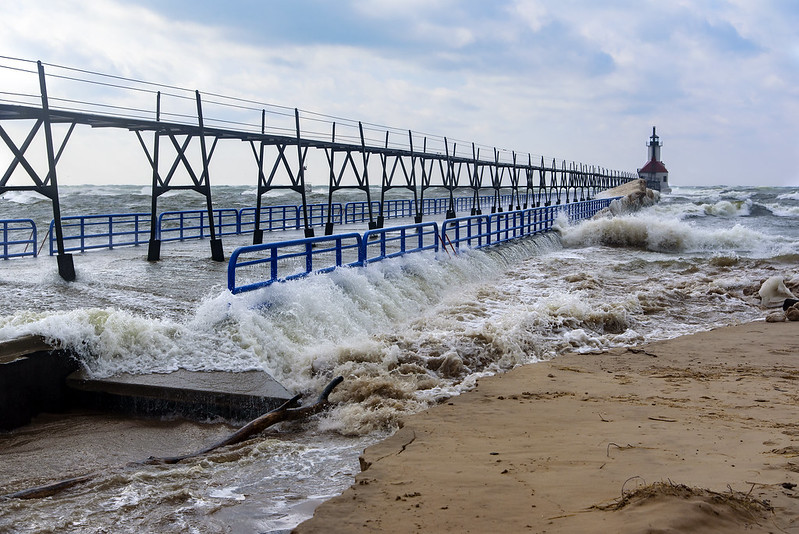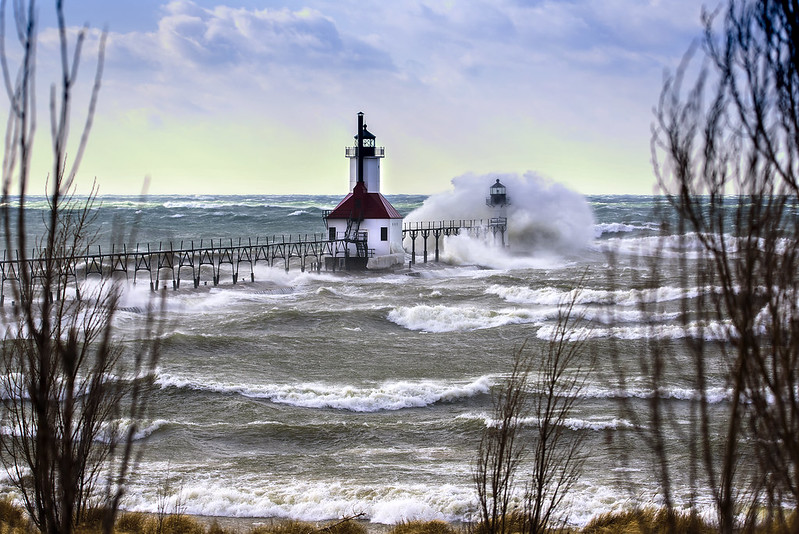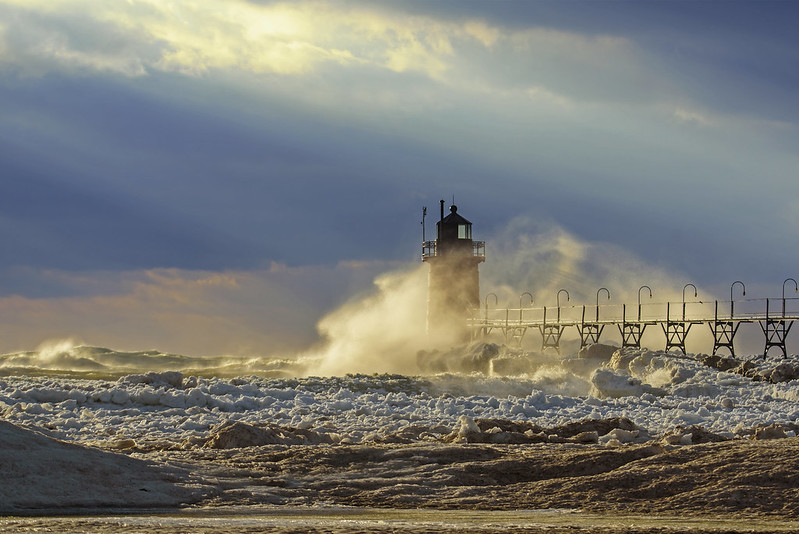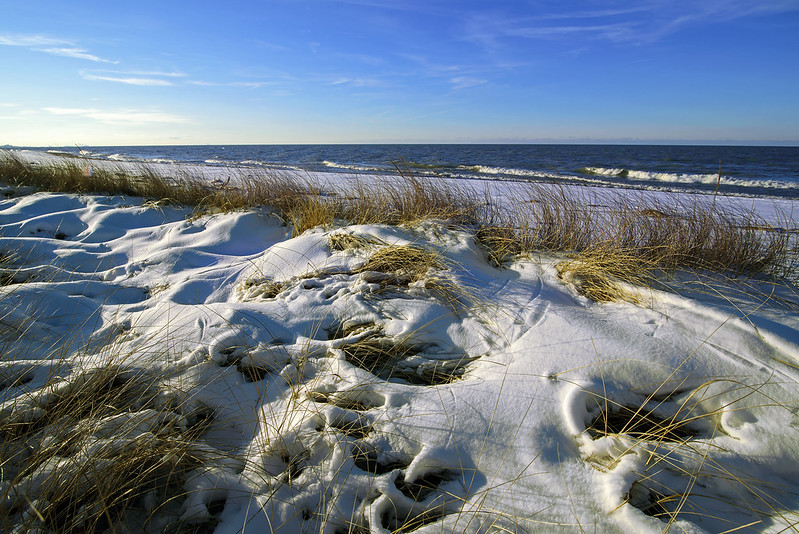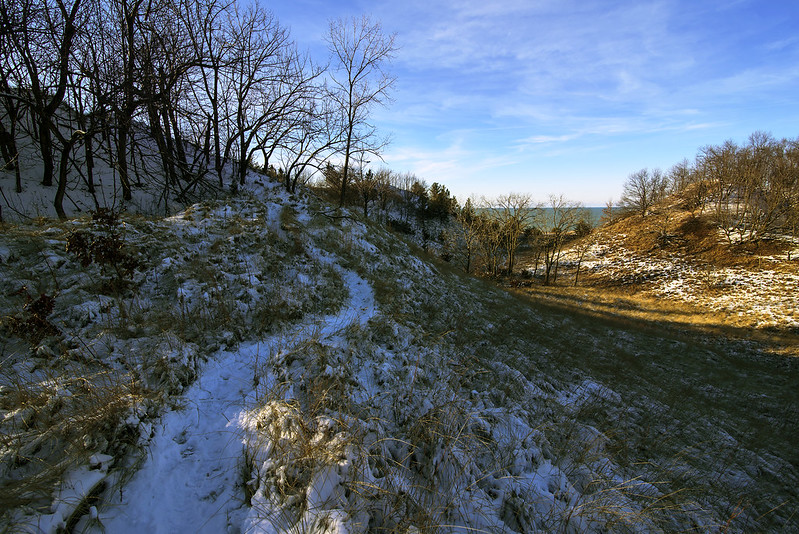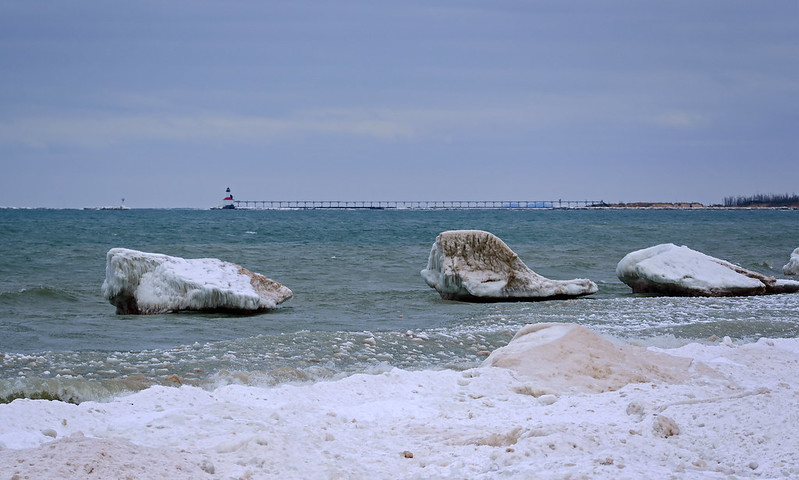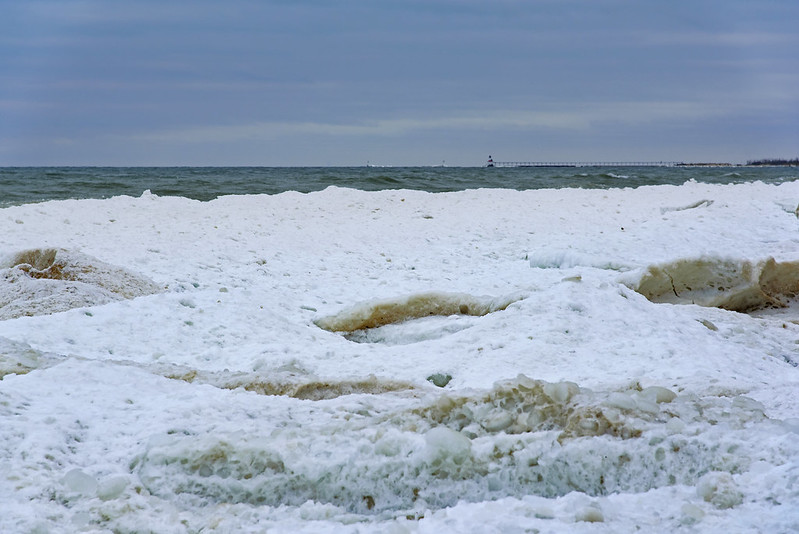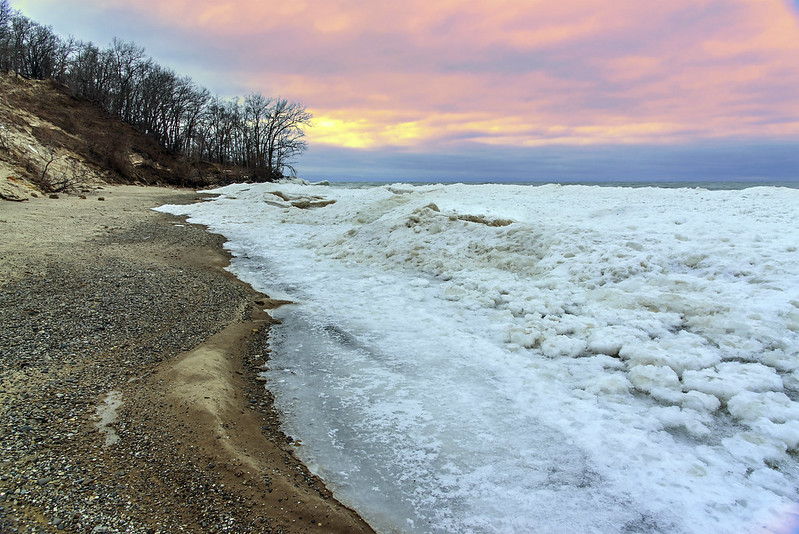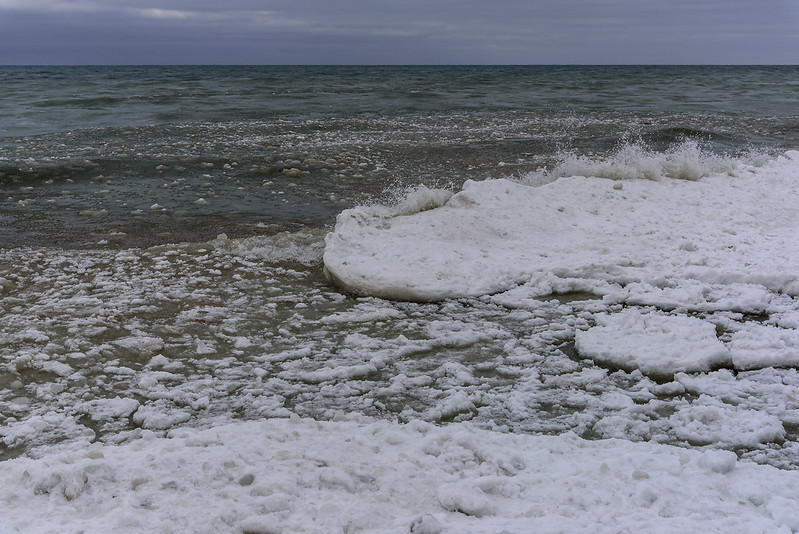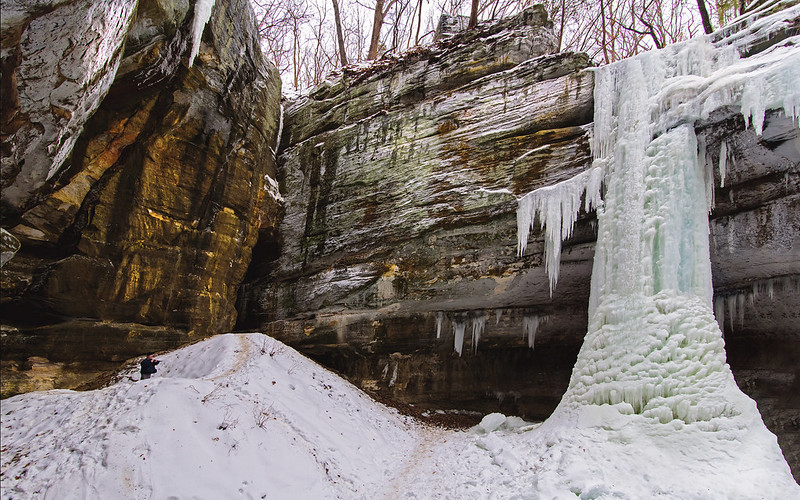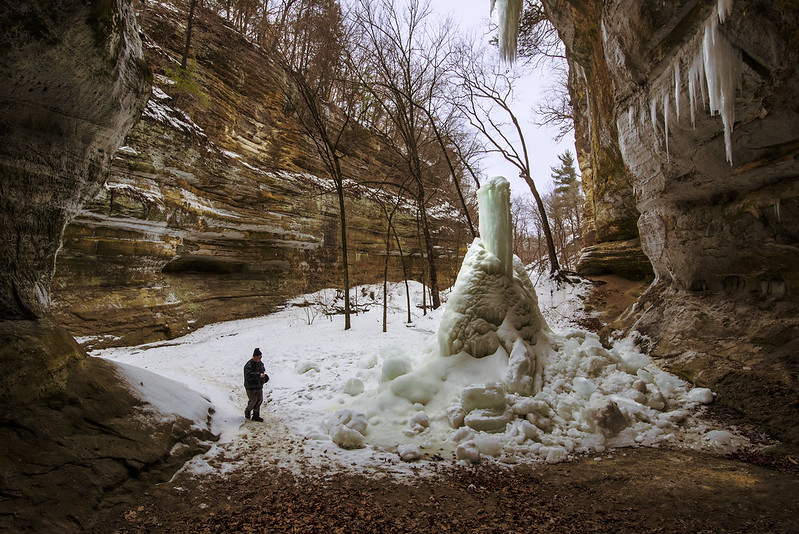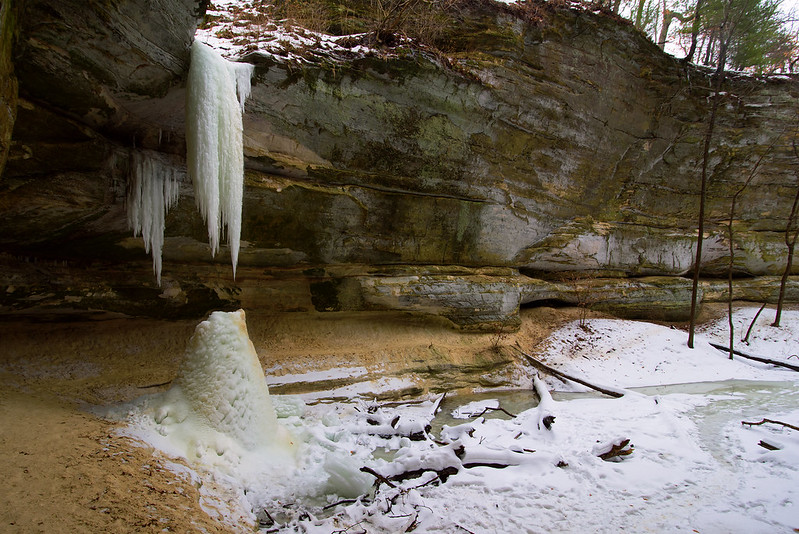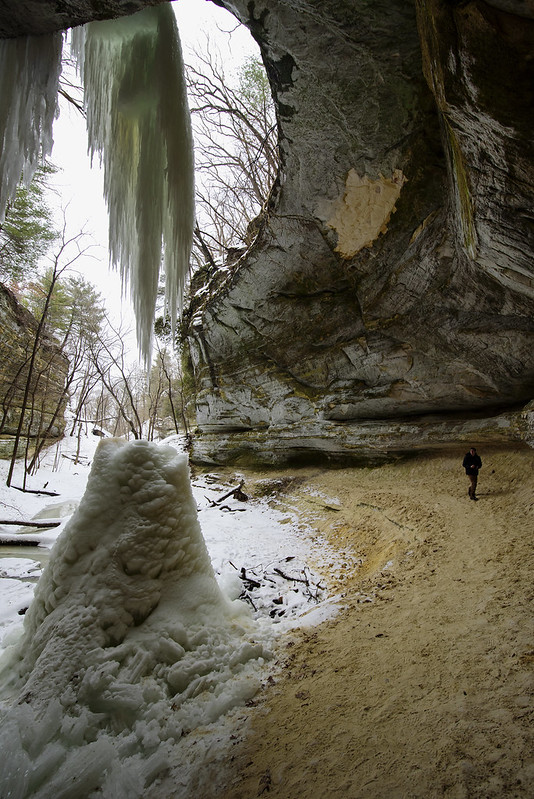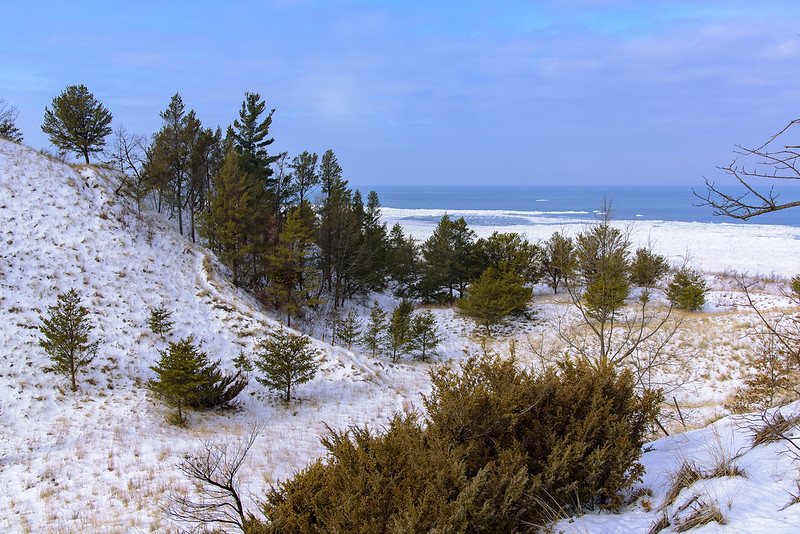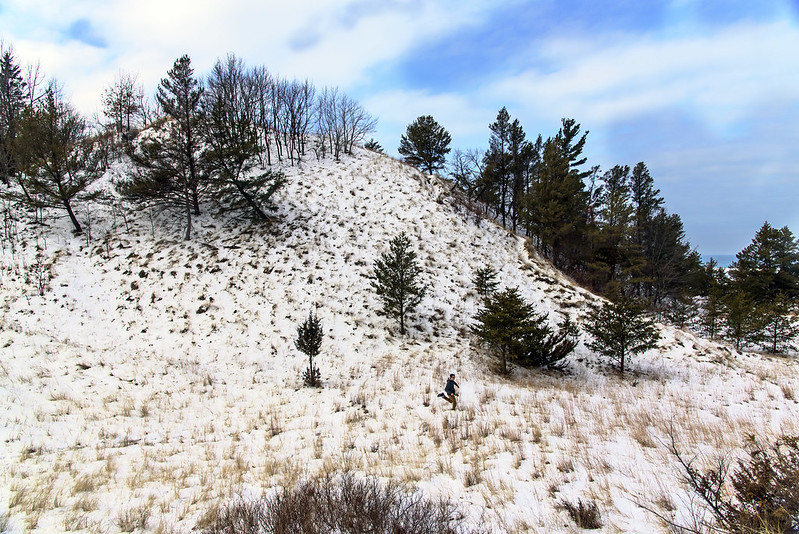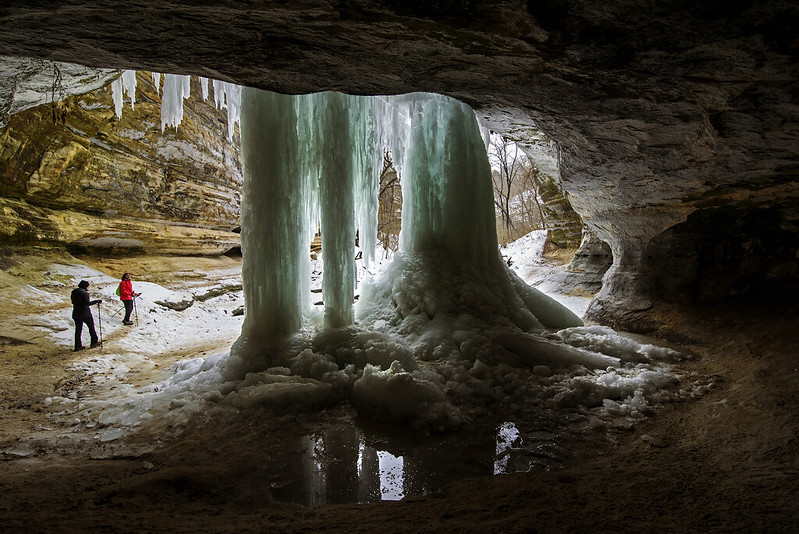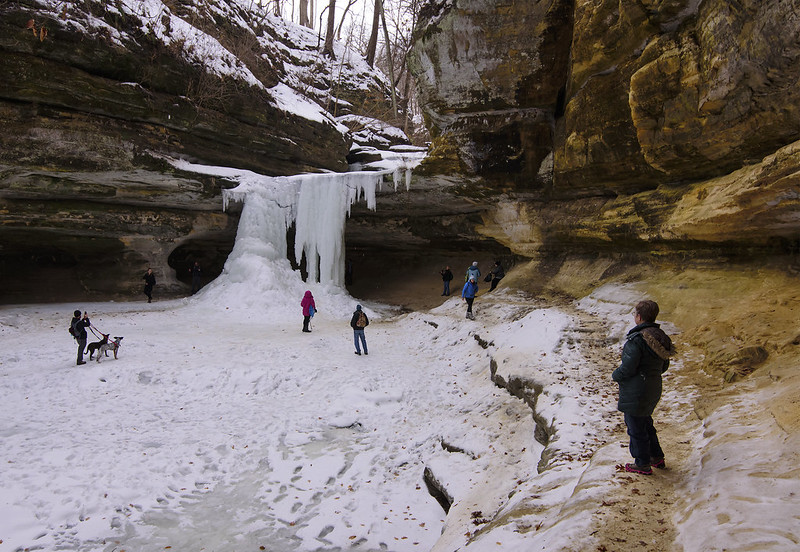
Each winter, the waves of Lake Michigan crash onto the beach and freeze into large ice mounds. Some years, these mounds can reach a height of 15 feet or more, and extend into the lake as far as the eye can see. This year, the ice isn't that tall or that wide, but it's still impressive if you walk along the shore. Walking on this is can be deadly, and should never be done. Knowing this beach very well, and being able to read the shore and ice, I can tell the first ice mounds on the beach were actually on the shore and not over water. These mounds formed early, before any shelf ice formed into the lake, so the splashing water created mounds on the sand, a few feet from the water's edge. So, where we were standing in the photo above, was on the shore, and not over the water. If you're not familiar with the beach, don't even walk near this ice, the churning water can deposit sand and stones on the ice, making it appear as if you're walking on the sand, but in fact you're walking on the ice.
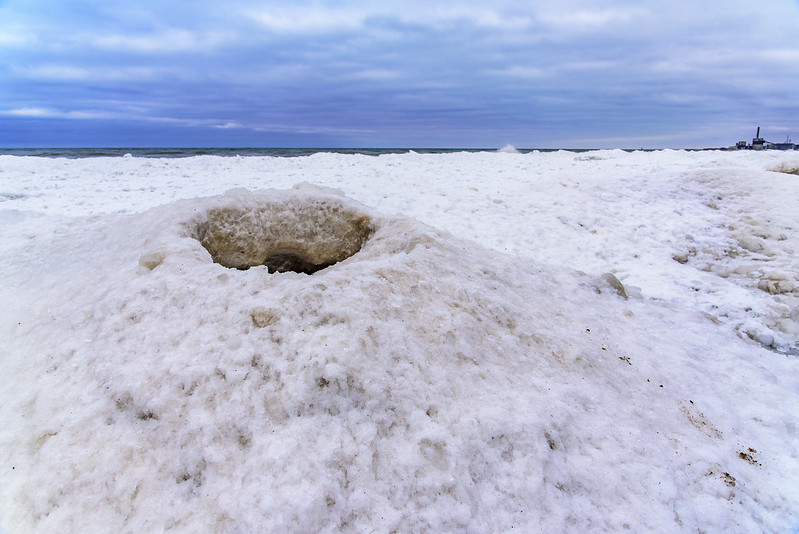
A close-up of one of the ice mounds gives a bit of information about how it was formed. It appears a lot like a volcano, and it's formed by similar physics. The water and ice splash up and begin to form a cone, and the cone grows in size until it becomes wider than the ice can be thrown by the water. At that time, the ice begins to build out into the lake. So these ice mounds form next to one another and extend far out into the lake. Ice and snow often cover these holes and cracks, making them difficult to see. One can easily step into them and fall through the thin ice, into the cone and into the freezing cold water below. There's really no way out.

At this time of the winter, the ice only extends about 100 feet into the lake. It appears it was a bit wider a few weeks back, judging by some of the lone ice chunks standing in the water past the shelf ice. If you visit the lakeshore in winter, please remember to stay off the ice at all times. It may be 10 or 15 feet thick, but there are so many cracks and holes you don't see that lead to the frigid water below
 Tonti Canyon is an out of the way canyon within Starved Rock State Park. Out of the way because it's quite a hike from any parking area, and a broken bridge and closed trail makes the hike about a mile longer. Traffic is a bit lighter here, it seems people don't want to walk too far from the comforts of their cars, but they're the ones who are missing out.
Tonti Canyon is an out of the way canyon within Starved Rock State Park. Out of the way because it's quite a hike from any parking area, and a broken bridge and closed trail makes the hike about a mile longer. Traffic is a bit lighter here, it seems people don't want to walk too far from the comforts of their cars, but they're the ones who are missing out. 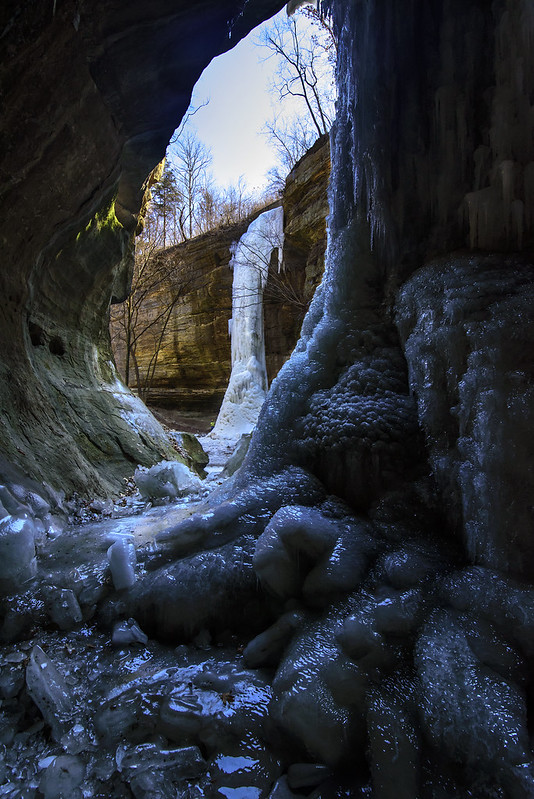 If you look closely in all the photos here, you'll see ice climbers, and if you look carefully in the photo above, the climber at the base of the distant ice fall gives an idea of just how tall these ice features really are. The photo was taken from behind one of the waterfalls, and under the overhang of the canyon wall. This is the ice fall in this canyon that climbers trust and attempt, while the distant one may be a bit too weak to support climbing.
If you look closely in all the photos here, you'll see ice climbers, and if you look carefully in the photo above, the climber at the base of the distant ice fall gives an idea of just how tall these ice features really are. The photo was taken from behind one of the waterfalls, and under the overhang of the canyon wall. This is the ice fall in this canyon that climbers trust and attempt, while the distant one may be a bit too weak to support climbing. 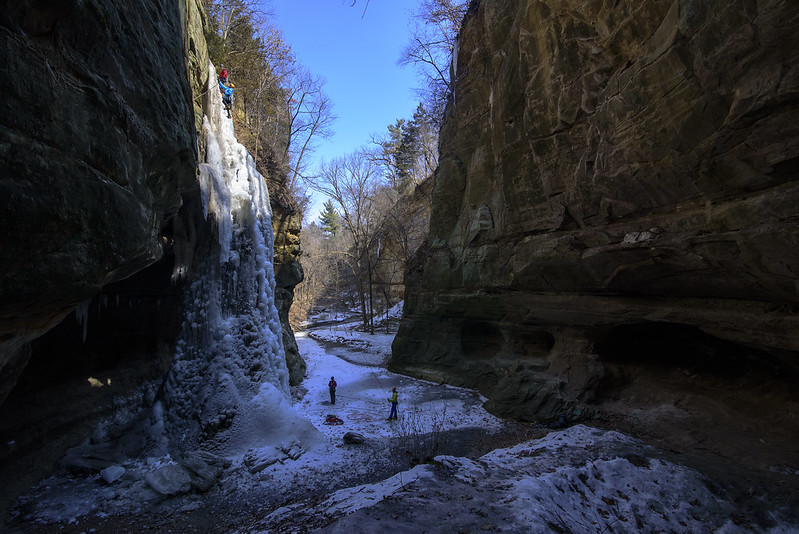 The climbers on the ice fall have almost made it to the top of the fall; once there, they will rappel down to the canyon floor and give the next climber a hand with the safety line. Ice climbing is much more difficult than it seems. The surfaces are very slick, usually wet with flowing water, and the cold temperatures of the air and the ice quickly take a toll on the climber. In addition, the arms of the climber are being used above their head, forcing the warm blood away from the extremities, quickly fatiguing the hands, and making them cold very fast. The ice climbing season in Illinois is quite short, and a good number of climbers take advantage of the brief window by climbing the impressive ice falls of Starved Rock State Park.
The climbers on the ice fall have almost made it to the top of the fall; once there, they will rappel down to the canyon floor and give the next climber a hand with the safety line. Ice climbing is much more difficult than it seems. The surfaces are very slick, usually wet with flowing water, and the cold temperatures of the air and the ice quickly take a toll on the climber. In addition, the arms of the climber are being used above their head, forcing the warm blood away from the extremities, quickly fatiguing the hands, and making them cold very fast. The ice climbing season in Illinois is quite short, and a good number of climbers take advantage of the brief window by climbing the impressive ice falls of Starved Rock State Park.

